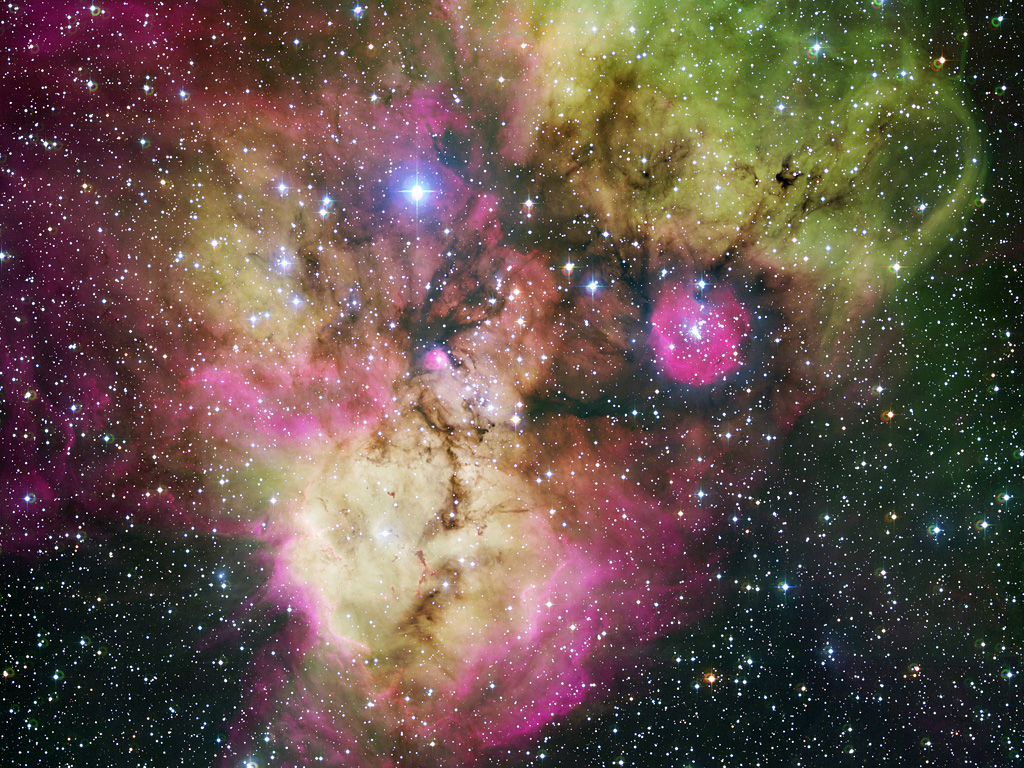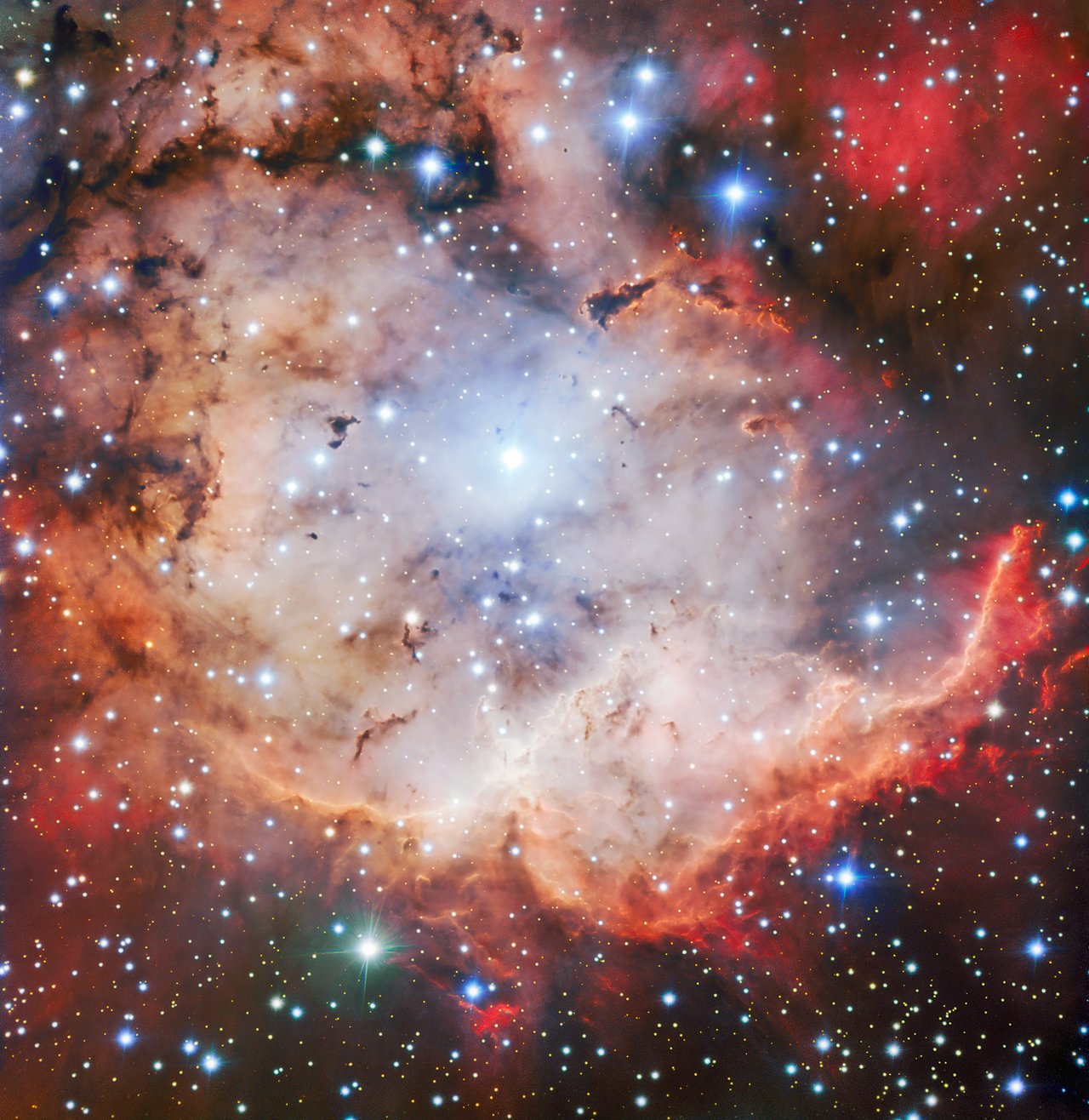Space Pirates Take Warning: This 'Skull and Crossbones Nebula' Is Full of Gas and Baby Stars
Avast, mateys! Unsheathe your spyglasses and train them on the southern skies. There sails a star-forging nebula on the horizon, and it's flying the Jolly Roger from its stellar sails!
*Ahem* Enough of that. The point is, a cluster of stars out there called NGC 2467 looks like an awesome skeletal nightmare mask in the sky — hence its nickname, the "Skull and Crossbones Nebula." Today, the European Southern Observatory (ESO) released a new photo of the nebula's shrieking "mouth" spitting fresh stars across the cosmic sea.
Keeping with the high-seas theme, the Skull and Crossbones nebula lives in the constellation Puppis, or "the poop deck," near the Perseus Arm of the Milky Way. It's located a few tens of thousands of light-years away from Earth.
The nebula is thought to consist of several young star clusters that have been around for only 1 million or 2 million years at most, and it's an active stellar nursery for new star formation, according to the ESO. For this reason, scientists interested in the birth of fresh stars have occasionally studiednebula NGC 2467. [11 Fascinating Facts About Our Milky Way Galaxy]
From our point of view on Earth, the nebula's swirling clouds of gas and dust (the stuff of future stars) form the outline of a giant face in the night sky, while two bright star clusters peer out from the face's dark sockets like menacing eyes. In addition to the human-skull comparison, nebula NGC 2467has also been described as a colorful ghost or the face of a long-snouted mandrill monkey. Pick any image you like, but if you happen to buy a print of this terrifying stellar nursery from the ESO e-shop, perhaps don't hang it on your own child's nursery wall.
The new image of the nebula's mouth was taken by the ESO's Very Large Telescope as part of the ESO Cosmic Gems program, an outreach initiative aiming to share wondrous images of the cosmos taken by the organization's telescope. You can see more of the program's recent gems, including a nebula that looks like a giant bubble and the rainbow curtains of the Medusa Nebula, on the program homepage here.
Originally published on Live Science.
Breaking space news, the latest updates on rocket launches, skywatching events and more!

Brandon has been a senior writer at Live Science since 2017, and was formerly a staff writer and editor at Reader's Digest magazine. His writing has appeared in The Washington Post, CBS.com, the Richard Dawkins Foundation website and other outlets. He holds a bachelor's degree in creative writing from the University of Arizona, with minors in journalism and media arts. He enjoys writing most about space, geoscience and the mysteries of the universe.



